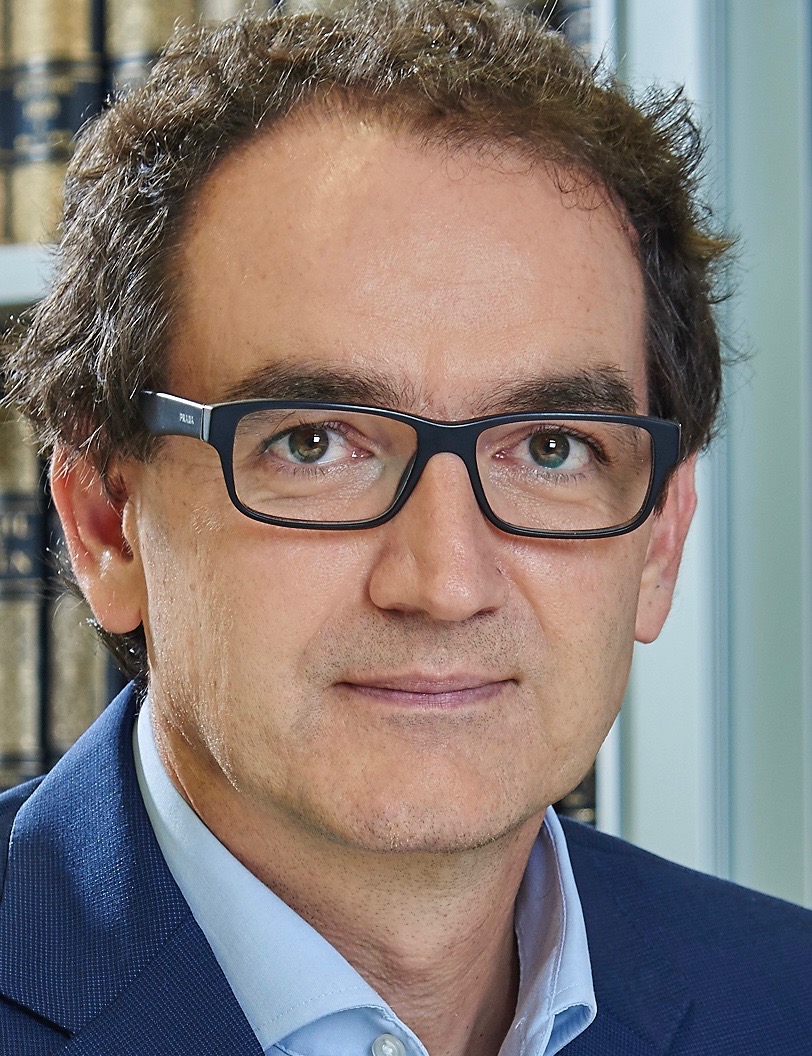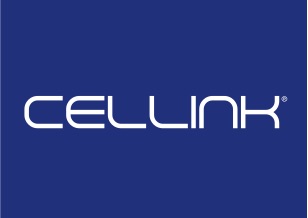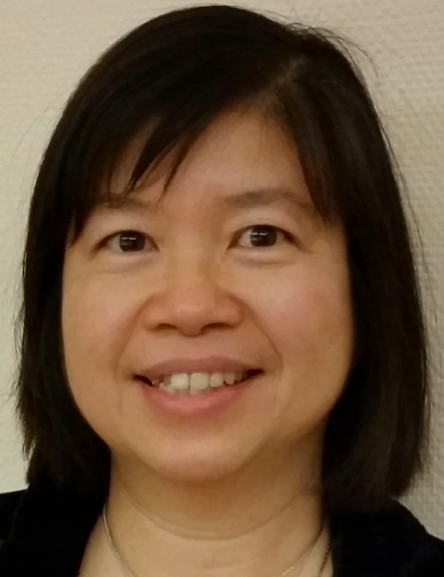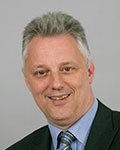Tuesday, 17 October 201708:00 | Conference Registration, Materials Pick-Up, Morning Coffee and Tea | |
Session Title: Opening Session -- Emerging Themes in 3D-Printing in the Life Sciences |
| | 09:00 |  | Keynote Presentation Hybridized Biofabrication for On-Chip Tissues
Yan Yan Shery Huang, Professor of BioEngineering, University of Cambridge, United Kingdom
Multi-material and hybridized bioprinting technologies offer promising avenues to create mini-tissue models with enhanced heterogeneity and complexity. This presentation will first overview the application of 3D bioprinting and microfabrication techniques to fabricate tissue-on-a-chip systems for in vitro drug testing and screening. I will then talk about strategies used in my lab for multimaterial integration, with applications in building a generic cancer metastasis model. Finally, key hypothesis and future directions are highlighted. |
| 09:45 | Stem Cell Bioprinting using a Hybrid Microporous Bioink
Adam Perriman, Associate Professor of Biodesign, Reader in Biomaterials, University of Bristol, United Kingdom
We describe the development and testing of a highly effective hybrid gel-based bio-ink, which we use to print a range of macroscopic structures as well as fine crosshatched motifs. Significantly, we demonstrate that the mesenchymal stem cell-laden bio-ink can be used to rapidly print structures while maintaining high levels of cell viability (>80%), and that the constructs (including a life-sized trachea ring) can be used in cartilage and bone tissue engineering, giving rise to well-distributed extracellular matrix components (collagen, glycosaminoglycan, calcium and phosphate) within the printed geometry. | 10:15 | 3d.FAB Platform: 3D Printing for Life Science
Christophe Marquette, Research Director , Universite Lyon , France
The 3d.FAB platform of the Lyon1 University, a unique structure in Europe, hosts and drives research projects (private and academic) in the field of health and life science. A large panel of technological offers are available, from FDM to DLP but also bioprinting. Are also available techniques leading to ultra-high resolution using 2 photons printing and ceramic printing. Numerous projects hosted by the platform will be presented with a special focus on cell printing for skin, cartilage, cardiac patches and bone substitute production. 4D printing of hydrogels having biochemical active functions will also be presented together with project dealing with implantable polymer printing. The integration of multiple 3D printing techniques within a single object or tissue, a specificity of the platform, will also be presented to demonstrate the potential impact of the technique in the field. | 10:45 | Coffee Break and Networking in the Exhibit Hall | 11:15 | The Importance of Cell Phenotype in 3D Printing
Ali Mobasheri, Professor, University of Surrey, United Kingdom
Cellular therapy, tissue engineering and 3-D printing rely on the phenotypic stability of cells. 3D printing has shown great promise in tissue fabrication with a structural control from micro- to macro-scale. However, in order to provide a biomimetic structural environment that can facilitate tissue formation and promote host tissue integration, cells must maintain their phenotype. This presentation will focus on strategies that may be used to enhance the phenotypic stability of cells for 3-D printing, using cartilage as a an example tissue. | 11:45 |  | Keynote Presentation Additive Manufacturing for Digital Dentistry
Jürgen Stampfl, Professor, Institute of Materials Science and Technology, Vienna University of Technology, Austria
Digital dentistry is one of the fastest growing field for additive manufacturing. Applications like 3D-printing of crowns and bridges, aligners for orthodontics, drilling guides and 3D-printed implants request parts with high shape complexity and high degree of personalization. The talk will give an insight into the state of the art in the field and point out challenges in materials development for digital dentistry. |
| 12:30 | Multi-Scale Structured Biomaterials For Tissue Engineering
Frederik Claeyssens, Senior Lecturer, Materials Science and Engineering, University of Sheffield, United Kingdom
Natural tissues and organs are typically structured in a hierarchical fashion, in which the Extra-Cellular Matrix (ECM) provides a microporosity to optimally support cell growth while larger scale structures (e.g. vasculature and boundary layers) are incorporated to support the function and structure of the tissue and organ. To mimic this multiscale structuring in synthetic biomaterials we combine additive manufacturing with self-assembly. In this structuring technique the internal porosity is governed by self-assembly and the macroscopic structure is constructed by additive manufacturing. Emulsion templating is used as self-assembly technique to produce materials with a high microscale porosity. These emulsions can subsequently be used as photocurable resins for stereolithography, producing user-defined macroscale structures with a tissue-like microporosity. The biodegradability and mechanical and physical properties of these materials can be varied via the changing the monomer within the resin. | 13:00 |  Technology Spotlight: Technology Spotlight:
PRIMO: Quantitative Photopatterning of Proteins for Controlling the Cellular Microenvironment
Matthieu Opitz, Research Scientist, Alvéole
Cell biology is faced with significant challenges when attempting to create complex microenvironments to mimic the in vitro conditions. These challenges can be overcome by molecular printing on cell culture surfaces, which involves the controlled deposition of proteins on a substrate at micrometer scale to control cell adhesion. This approach has developed tremendously in the past few years, however most micropatterning methods are still limited to only one type of molecule per pattern and do not allow for gradient patterning. We recently developed a new device – PRIMO – allowing for quantitative multi-protein micropatterning. The PRIMO photopatterning technique is based on the technology named “Light-Induced Molecular Adsorption of Proteins (LIMAP)” and uses a water-soluble photo-initiator (PLPP) able to reverse the antifouling property of polymer brushes when exposed to UV light. Our optical setup is composed of a wide-field DMD based projection system coupled to a conventional epifluorescence microscope. It allows to generate any shape of patterns with a resolution down to 1.2 µm, gradients of density of proteins and to control the pattern alignment for multi-protein patterning or for patterning on microstructures. The range of applications of this technology extends from the single molecule up to the multicellular scale with an exquisite control over local protein density. We show that it can be used to generate complex and dynamic protein landscapes useful for cell-cell and cell-matrix interactions studies. Moreover, the DMD-based spatial control of light can be combined with functionalized UV-sensitive hydrogels precursors opening new doors to highly controlled 3D cell cultures.
| 13:15 | Networking Lunch in the Exhibit Hall -- Meet the Exhibitors and View Posters | |
Session Title: Organs-on-Chips and Tissues-on-a-Chip |
| | 14:30 |  | Keynote Presentation Building Phenotypic Body-on-a-chip Models for Toxicological and Efficacy Evaluations in Drug Discovery as well as Precision Medicine
James Hickman, Professor, Nanoscience Technology, Chemistry, Biomolecular Science and Electrical Engineering, University of Central Florida; Chief Scientist, Hesperos, United States of America
|
| 15:15 | Multi Organ Functional Human On-a-Chip Systems for Drug Discovery with Focus on Efficacy
Torsten Hoffman, Senior Consultant for Drug Discovery, Hesperos, Germany
It is well known that the cost of drug discovery and subsequent regulatory approval for each new candidate now exceeds $2B and in most cases requires 10-15 years of development time before general availability is granted by either the FDA or EMA. The industry would benefit greatly from better pre-clinical screening technologies for mechanistic toxicology to reduce the attrition rate during clinical trials as well as to begin to pre-select specific genetic sub-populations for optimal drug efficacy with limited distribution. A promising technology to help reduce the cost and time of this process are body-on-a-chip or human-on-a-chip systems either at the single organ level or more advanced systems where multiple organ mimics are integrated to allow organ to organ communication and interaction for mechanistic determinations for not only safety but efficacy as well. Research is now focus on the establishment of functional in vitro systems to address this deficit to create organ mimics and their subsystems to model motor control, muscle function, myelination and cognitive function, as well as cardiac subsystems are in development. The idea is to integrate microsystems fabrication technology and surface modifications with protein and cellular components, for initiating and maintaining self-assembly and growth into biologically, mechanically and electronically interactive functional multi-component systems. Cardiac systems have been developed that allow independent evaluation of electrical conduction and force generation in cardiac muscle for mechanistic studies. These have also been combined with liver systems in the same platform to include metabolic effects. Recently a 4-organ system with recirculating medium was demonstrated and multi organ toxicity that reproduced in vivo results. Overall there appears to be outstanding potential to apply these new human-on-a-chip systems to understand mechanistic toxicology and efficacy. Examples of the described technologies and systems will be presented with focus on safety and efficacy. | 15:45 |  Technology Spotlight: Technology Spotlight:
Development of Bioinks for 3D Bioprinting of Soft Tissues
Elin Pernevik, Bioink Engineer, CELLINK
3D Bioprinting has gained attention in tissue engineering due to its ability to spatially control the placement of cells, biomaterials and biological molecules. The development of new hydrogel bioinks with good printability and bioactive properties has made it possible to 3D bioprint and accelerate the maturation of complex 3D tissue-like models. In this talk, we present our recent bioink development for different tissue engineering applications, such as brain, skin and bone tissues.
| 16:15 | Coffee and Networking in Exhibition Hall | 16:45 | Panel Discussion: Emerging Themes and Trajectory for 3D-Bioprinting in Life Sciences Research
| 17:30 | Close of Day 1 of the Conference |
Wednesday, 18 October 201708:00 | Morning Coffee, Tea and Networking | |
Session Title: Applications of 3D-Printing in the Life Sciences |
| | 08:30 |  | Keynote Presentation Biomimetic Collagen-Like Hydrogels: From In Vitro Testing to Regenerative Medicine
May Griffith, Professor and Caroline Durand Foundation Research Chair in Cellular Therapy, University of Montreal, Canada
The body’s extracellular matrix (ECM) modulates both organ development and its repair and regeneration. Collagen is a major component of the ECM and we have shown that a recombinantly produced version of human collagen in form of cell-free hydrogel implants successfully promoted regeneration of the human cornea in clinical trials. These implants were fabricated by 3D moulding. However, recombinant human collagen like native collagen is a large protein and not easily processed for fabrication into implants. We have therefore developed collagen-like peptide-based analogs. These analogs can also be moulded into implants and their performance in pre-clinical large animal models shows equivalence in function. However, they are readily synthesized, easy to functionalize chemically as well as physically, the latter by micro- and nano-patterning. |
| 09:15 | Promises and Future of Bioprinting Technic in Cosmetic Evaluation
Maité Rielland, Advanced Research Engineer, L’Oréal, France
Since last 80’, a long time before 2013 European Union ban on animal testing for cosmetic products, L’Oréal has placed itself as a pioneer for reconstructed human skin. It became one of the first cosmetic companies testing its raw materials/actives/formulations on in-house reconstructed human skin and now selling them through Episkin, our production company in Lyon, France. Bioprinting is a great alternative to create new models of skin with a complexity that cannot be achieved only by human hands. One of the biggest potential advantages of this technology is the ability to place cells or biological material where it needs to be placed, opening a few doors for tissue engineering. It will be a tool for screening and model construction in the next few years and is already pushing us to think 3D in vitro models and Tissue Engineering differently. | 09:45 | 3D Printing Model Assist Ribs Open Reduction and Internal Fixation
Kuan Hsun Lin, Chief Resident, Division of Thoracic Surgery, National Defense Medical Center Taipei and Taiwan FDA, Taiwan
The 3D model can help surgeons get more information than a traditional image. The utilization of 3D-printing model assist Ribs open reduction and internal fixation revealed the importance of pre-operative shaping of personalize plates to improve surgical intervention. | 10:15 | Novel Scaffolding Approaches for the Biomedical and Clinical Sciences
Suwan Jayasinghe, Professor of Bioengineering, Centre for Stem Cells and Regenerative Medicine and Department of Mechanical Engineering, University College London, United Kingdom
Scaffolds are critical for reconstructing a fully cellularised tissue. In this presentation the author presents and discusses the many approaches said to have promise in this endeavour, namely in the reconstruction of tissues, greatly demanded in regenerative medicine. The methods chosen and highlighted in this presentation are based on their perceived promise as postulated in the literature. These methods are further distilled and categorised into either direct and in-direct methods by their ability to either handle the cells and added materials simultaneously or not. Additionally, the author raises another important facet previously not given any thought to, which is - are the cells with other materials truly in three-dimensions to each other? This is critical in the authors perspective as the end goal is for the development of a fully cellularised thick tissue having cells dispersed in three-dimensions to each other for the cells to undergo all expected cellular behaviour as understood through native tissues. Hence keeping the above aspects in mind together with the time and associated costs for the reconstruction of a fully functional tissue each method is critically reviewed elucidating the pros and cons of each approach, and their implications and practicalities to translate into the clinic. Thus, demonstrating the true potential and viability for any approach to move into either the biomedical laboratory and/or the clinic. In coda, the presentation goes onto discussing some significant translational aspects, within the wider aim of regenerative medicine to which these approaches would be able to contribute. The presentation intends to provoke the reader to think practically and realistically about what it might take to develop a technology to reconstruct tissues for repair, replacement and rejuvenation of damaged and/or aging tissues within a clinical environment. | 10:45 | Coffee Break and Networking in the Exhibit Hall | 11:15 | Image-Guided, Laser-Based Fabrication of Hydrogel-Embedded Microfluidic Networks
John Hundley Slater, Associate Professor of Biomedical Engineering, University of Delaware, United States of America
We demonstrate fabrication of three-dimensional, biomimetic microfluidic networks embedded in hydrogels by combining laser-based hydrogel degradation with image-guided laser control. Generation of high-density, capillary-like microfluidic networks that recapitulate the architecture of in vivo microvasculature as well as the ability to induce internetwork transport between two independent microfluidic systems is presented. Recapitulating in vivo-like transport using biomimetic microfluidic networks may prove advantageous in fabricating advanced in vitro tissue models. | 11:45 | The Role of Scaffold Architecture in Guiding Tissue Growth: From Modeling to Microfluidics
José Manuel García-Aznar, Professor, Mechanical Engineering, Mechanical and Biological Engineering Research group (M2BE), University of Zaragoza, Spain
Safe and effective regeneration of tissues require a high control of cellular response, which is dependent on multiple microenvironment cues, such as: extracellular matrix composition and architecture, cell-cell and cell-matrix interaction, interstitial fluid flow, growth factors, etc. In this work, we will investigate how scaffolds can regulate cell migration by means of the appropriate architecture. Actually, we present a combination of computational and in-vitro techniques to determine how scaffold architecture guide cell movement and consequently tissue growth. Multiscale computational modeling of tissue regeneration has predictive capabilities for the rational design of functional scaffolds that induce tissue growth and biomaterial degradation, regulating an adequate regeneration. Realistic, mechanistic models can provide a framework for understanding the fundamental mechano-chemical interactions between cells, material and fluid flow. Microfluidics is a powerful tool that allows in-vitro testing of 3D hydrogel-based scaffolds, due to their characteristics of recreating healing conditions, providing the possibility of co-culture different cell types. In fact, hydrogels are confined in chambers, which are connected with channels to control these microenvironmental conditions. In this work, we will present different computational approaches to analyze various regulatory mechanisms for guiding tissue growth, individual and collective cell migration. These advanced simulations will be complemented with the corresponding in-vitro experiments that will allow validating some of the conclusions provided by the numerical models. Therefore, different kinds of multiscale and multiphysics models are integrated in order to understand fundamental cellular processes that will help us to define the most adequate scaffold architecture for the successful guidance of tissue regeneration. | 12:15 | Networking Lunch in the Exhibit Hall -- Meet the Exhibitors and View Posters | 14:00 |  | Keynote Presentation 3D Printing Manufacture of Medicines
Clive Roberts, Professor of Pharmaceutical Nanotechnology and Head of School of Pharmacy, University of Nottingham, United States of America
The processes used to produce tablets, the dominant form of medicine taken by patients, have changed relatively little for over a century. Whilst these approaches serve the industry and patients very well they remain limited in some clinical areas and cannot create complex dosage forms or bespoke medications tailored for an individual or sub-population (ie personalised medicines). This would be valuable in meeting therapeutic challenges and the need for personalized medicines. 3D printing, offers a possible route to address these issues. I will show tablets produced using extrusion and ink-jet methods and amongst other examples, a 5-drug polypill and tablets with novel 3D architecture designed to control drug release. The potential and challenges for using 3DP in the manufacture of medicines and to provide new opportunities for clinical practice will be discussed as well as the considerable challenges that must be met to satisfy scale-up issues and regulatory requirements. I aim to show that 3D printing has already shown the capacity to meet some regulatory requirements and whilst many challenges remain this is a technology that could potentially benefit patients and radically alter the way we make and distribute some medicines. |
| 14:45 | 3D Printing of Full-Thickness Vascularized Human Skin Grafts
Pankaj Karande, Associate Professor, Chemical and Biological Engineering, Rensselaer Polytechnic Institute (RPI), United States of America
Dermal microvasculature not only promotes graft survival by supplying the tissue with oxygen and nutrients, but is also known to modulate inflammation and immune cell migration to the wound site. Vascularization of skin grafts is critical for successful skin engraftment. Here, using a 3D bioprinting platform, we show successful integration of a vascularized bed in a 3D printed full-thickness human skin model. We show the influence of different cell populations (fibroblasts, endothelial cells and pericytes) in controlling the formation of vasculature in vitro, and the successful integration of vascularized grafts in vivo. | 15:15 | Coffee and Networking in Exhibition Hall | 16:00 | A Journey in Translation
Martin Birchall, Professor, University College London, United Kingdom
| 16:30 | Remote (Light, Magnetic, Ultrasound) Guided Delivery of Cells and Site and Time Specific Activation of Biologically Active Compounds
Gleb Sukhorukov, Professor, University Of London, United Kingdom
| 17:00 | Strategies for Hard and Soft Tissue Regeneration
Paulo Jorge Bártolo, Chair of Advanced Manufacturing Processes & Director of the Manchester Biomanufacturing Centre, University of Manchester, United Kingdom
| 17:30 | Close of Conference |
|
